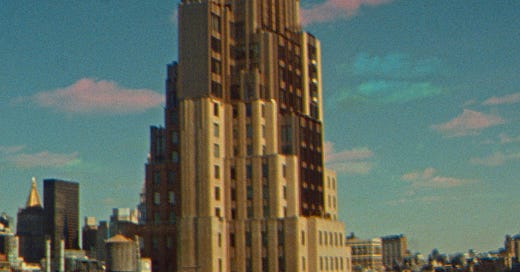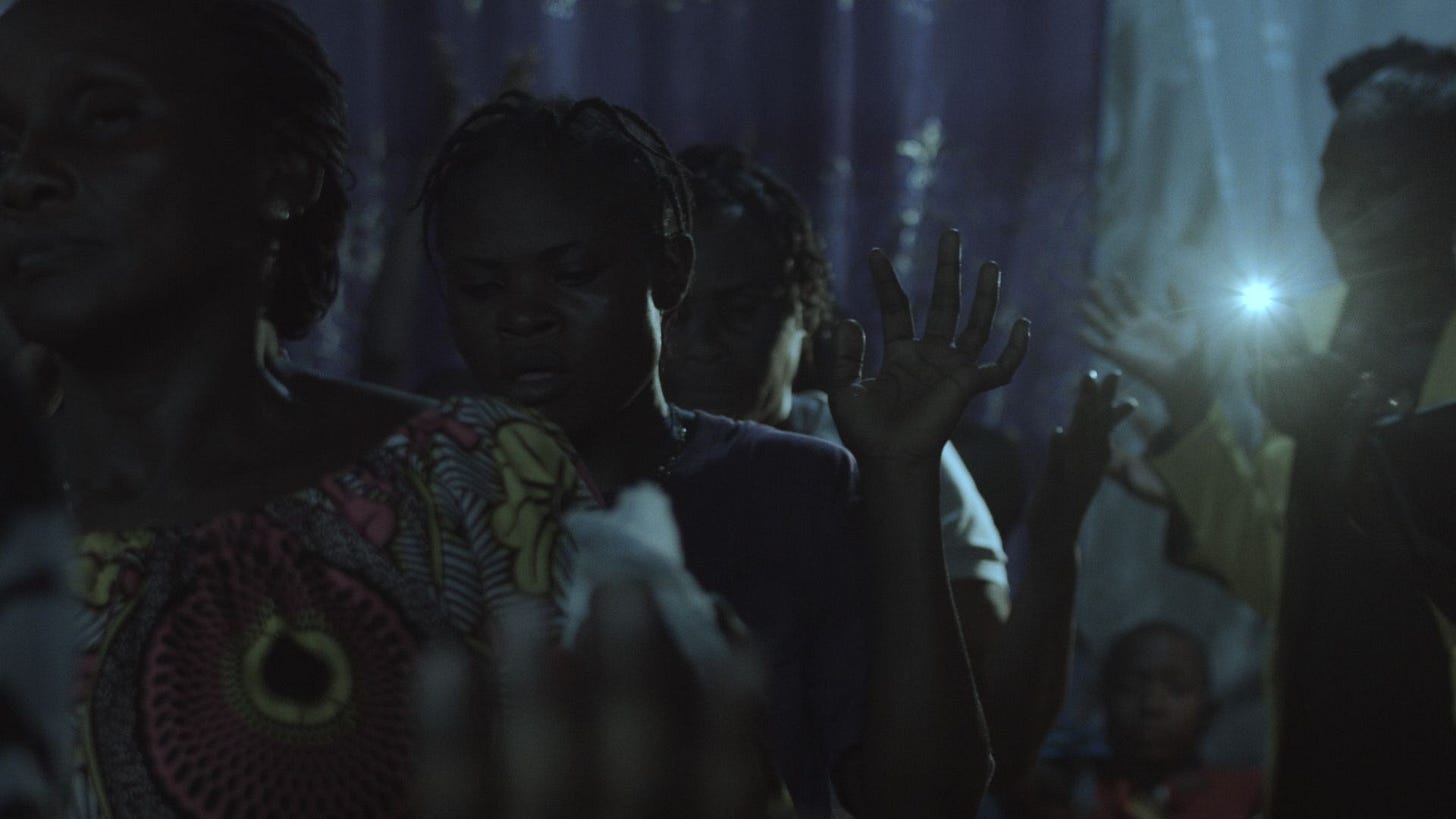SIFF #2: NYC RGB (Viktoria Schmid, 2023), Rising Up at Night (Nelson Makengo, 2024)
One of the most pleasurable films I’ve seen in recent memory, Viktoria Schmid’s NYC RGB, which plays as part of the festival’s ALT: See or Be Seen shorts program, is a dynamic, psychedelic city symphony. In the film, static shots of New York City are passed through red, green, and blue filters before being overlaid onto each other. As the temporally mismatched shots overlap, the subtle differences take on a vibrant hue. In some of the shots, shifting shadows create geometric blocks of color. In others, plumes of smoke fly in different multicolored directions. The coolest effect is the clouds, whose translucence turns the sky into a cotton candy dreamscape.
Schmid’s film is a gentle paean to transience, told in the most unsentimental, self-evident manner. Each shot is filled with colorful grace notes, each of which denotes the passage of time. It’s simple, effective, and moving.
Just as good is Nelson Makengo’s documentary Rising Up At Night. The Democratic Republic of the Congo suffers from an electricity shortage, so when nightfall hits Kinshasa, the city is shrouded in darkness. This creates a myriad of problems for the community. Mothers aren’t able to see what’s being fed to their children, resulting in worms getting into the food, and without lights to identify strangers, sexual assaults are on the rise. To make matters worse, the city is partially flooded, forcing residents to walk around partially submerged or travel by boat. Makengo’s highly immersive documentary, which adapts to shooting with practically non-existent natural light, follows the city’s residents as they go about their daily lives celebrating holidays, organizing community meetings, holding religious services, and wandering in the dark.
Stylistically, Makengo draws on a rich contemporary lineage of filmmakers reckoning with how to represent poverty and the third world. With its constantly moving camera, listless atmosphere, and sporadic moments of rapture, the film draws from Eduardo Williams’ The Human Surge. Makengo, who grew up near the city center and “entered the depths of the city’s working-class neighborhoods” to shoot the film makes comparisons to Pedro Costa unmistakable when the camera occasionally pauses on a frame of flashlight-assisted portraiture. The film seamlessly combines the two styles (and the thematics that accompany them) into something recognizably its own.
Makengo’s film is remarkable at identifying the vestiges of colonialism without breaking the film’s nearly first-person immersion. Throughout the film, radio broadcasts detail postponed plans from world powers such as China and Spain to build hydroelectric generators in the Congo, connecting the Kinshasa’s darkness to first and third world disparities. Religion also plays a role in the film’s colonial critique. Most Kinshasa residents are Christian, which spread throughout the Congo during its time under colonial rule, and the film’s most formally ambivalent moments take place during times of religious import. The film opens during a nighttime sermon. The Congolese residents are illuminated by lights in the shape of flowers and as they chant, standing in a few feet of water, Makengo plays an ominous drone. Every subsequent religious service includes audio disruption to increasingly terrifying effect. Later, a considerably more bombastic sequence with a man donning a Santa Claus mask veers into explicit horror.
Eventually, the community pools money for a new power cord. When they install the cord, we pointedly never see whether or not they’re successful, and Makengo wisely chooses not to end the film there. Instead, the film ends with a mundane boat ride through the flooded city, reiterating the film’s focus on the people of Kinshasa. As the credits roll, the individuals from the film introduce themselves.





